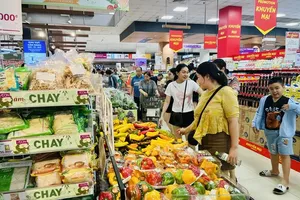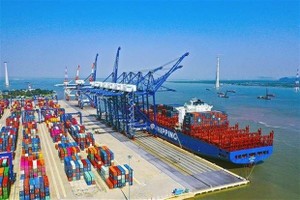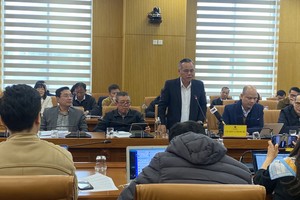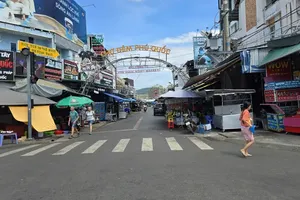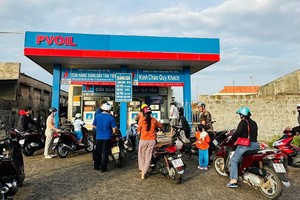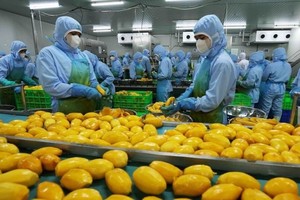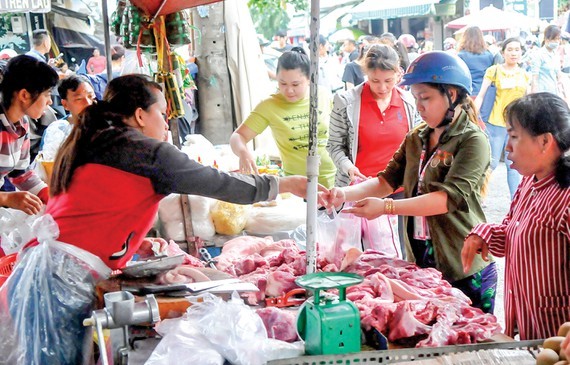
The statement was made by Ms. Nguyen Huynh Trang, deputy director of the Department of Industry and Trade in HCMC at a conference reviewing the coordination in implementing the market stabilization program between HCMC and other provinces and cities in the Southern region in 2019.
According to Ms. Trang, for the past ten days, pig price has no longer increased continuously but it still remained high at VND83,000 a kilogram. Consumption in the market reduced about 20 percent, of these modern distribution system witnessed a mitigation while traditional markets experienced a strong fall approximating 30 percent because consumers have been afraid of consuming products from sick pigs.
Talking about frozen pork import, Ms. Trang said that since the beginning of 2019 to December 10, the volume of pork imported to HCMC neared 14,000 tons, up 117 percent compared to the same period in 2018. The city most imported pork from Brazil, Poland, Canada, the US, Germany and Denmark. The price of imported pork accounts for 70 percent of domestic product.
Businesses under the market stabilization program has imported and stored up a large volume of pork. Of these, Vissan plans to store up 4,000 tons while San Ha plans 1,000 tons. San Ha has marketed its frozen pork while Vissan and Saigon Co.op have been discussing methods to take the product into Co.opmart supermarket system for sale.
Moreover, the city has worked with businesses supplying poultry meat and eggs, seafood to increase supply of subsidized products from 15-40 percent to give consumers more choices.
In order to stabilize supply and price at the end of the year, Ms. Trang said that HCMC and provinces should continue cooperating together to supply information and distribute goods suitably. Provinces should estimate purchasing power in the local market as well as their pork supply capacity, inform HCMC in case they need to increase the volume of frozen pork so that the city can have distribution solutions in a timely manner.
Representatives from localities affirmed that coordination in the program’s implementation has been effective preventing goods scarcity and price skyrocketing from occurring, except for pork which has seen consecutive price hike because of supply shortage. Hence the matter is that how provinces and cities will work together to stabilize supply and price to prevent partial shortage from disturbing the market.
Mr. Nguyen Minh Toai, director of the Department of Industry and Trade in Can Tho city, said that the high increase in pork price has been caused by short supply, consumer habit of consuming fresh meat, the high demand of pork consumption at the end of the year and illegal pig export from Vietnam to China. In addition, some localities have a large supply source and been able decide the price, affecting the pig price in the entire Southern region.
One of firms having the most impact on pig price is CP Vietnam, according to Mr. Toai. Currently, the company is selling pig at the price higher than market price, contributing to malaise in the market . The department has reported the issue to the Ministry of Industry and Trade. Relevant agencies have been aware of the situation and mobilized CP Vietnam to coordinate with the local government to implement the price stabilization program.
Aside from that, Can Tho has proposed ministries and agencies to permit businesses to increase pork import to make up the shortage. However, if domestic pig prices remain high, imported pork will put pressure on the domestic livestock industry. So this should be carefully considered, if CP Vietnam cooperates, pork supply and price stabilization will be more advantageous, said Mr. Toai.
Sharing the same view, Mr. Duong Hoang Hoanh, deputy director of the Department of Industry and Trade in Long An province, said that under the law of supply and demand, supply shortage will result in price increase. However currently some enterprises are capable of producing and supplying a large amount of pork so they might be able to rule the market price in the upcoming time, this is a matter of concern in market stabilization.
Implementing the policy of pork import, relevant agencies should publicize information about import firms, import output and distribution places to better efficiency of pork supply coordination and price stabilization in localities. There should be distribution and consumption plans among localities on the basic of supply and demand forecast.
